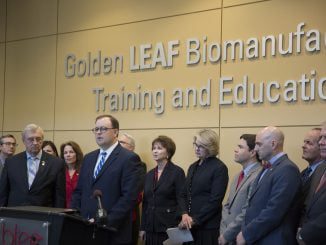
Being a businesswoman, I’m accustomed to identifying a problem and developing a solution. In government, that’s difficult to do. First, it’s easy to identify the problem. But too many have a different idea of what the solution might be. Usually in government, too many think the answer is to throw more money at the problem. In business, that’s the definition of insanity. Throwing more money at the situation doesn’t help if changes are not made.
This is probably the most frustrating of all requirements to serve in government. Finding ways to institute solutions to a difficult problem when we can’t agree on the solution. Agreeing on the goal is easy, but often, too many think that if we only had more money to throw at the problem, it would be solved. That’s usually never the case.
I realize that this has been the standard operating procedure for many years. I decided to look back at some important lessons. Life in 1776 was quite different in many ways and yet very much the same.
In 1776, the 13 colonies had been around for 150 years, and those with talent and ambition had risen to the top and acquired wealth. In the South, the wealthiest were large plantation owners. In the North, the higher-income earners were merchants like John Hancock. Then, there were lawyers like John Adams and tavern owners who averaged about $100,000 per year in modern money.
Surprisingly, doctors of the day made very little money. Dentists made even less and were very rare. That’s a big change from the way things are today.
In the northern colonies, data shows that the top 10% of the population owned about 45% of all wealth. In parts of the South, 10% owned 75% of the wealth. But America had a thriving middle class, in contrast to most countries at the time. There were many well-to-do farmers who shipped crops to Europe and the West Indies. These shipments provided enough profits to send their children to private schools and provide carriages and expensive gowns for their wives. Skilled workmen such as tailors and carpenters also prospered.
America was also a very diverse nation. The first census, taken in 1790, shows that only 60% of our people came from England. The remainder were a mixture of German, Irish, African, Swedish, Dutch and Scottish.
America is still one of the most diverse nations on Earth. Our people come from every walk of life and every corner of the Earth. Each one is unique, a creation of the almighty with different skills and talents. Each is here for a purpose with distinct assignments.
The problems of today are not too different from the ones that were faced in 1776. There were many who were very rich and many who had little. That’s not too different than today.
The differences are stark in contrast to the role of government today and in 1776. There were no social programs for those who were poor to rely on. There were no welfare programs, Medicare, Medicaid, Social Security, Food Stamps, etc. We could go on for days making the contrast to programs available today compared to then.
This has reminded me of how often Jesus spoke about the poor and our responsibility to care for the least among us. I must point out that Jesus was speaking to us, the people, and not to the government when He commanded us to care for the poor. A faceless bureaucrat will never be able to take the place of a caring neighbor who loves and supports their fellow human beings. Imagine what we can do in partnership with the government, lifting our neighbors up with a helping hand.
Neighbors helping neighbors was a way of life in 1776 and not too many years ago as well. Sadly, today, it’s not so much the case. I’m afraid that too often, we look to someone else, oftentimes the government, to fill the roles that we, as fellow human beings, are commanded to fill.
Most of the changes since 1776 have made our country better. The community spirit and neighbor-helping-neighbor are not as strong a tradition as they were back then. They should be. It’s a grand solution to many problems.
Sen. Joyce Krawiec has represented Forsyth County and the 31st District in the North Carolina Senate since 2014. She lives in Kernersville.

